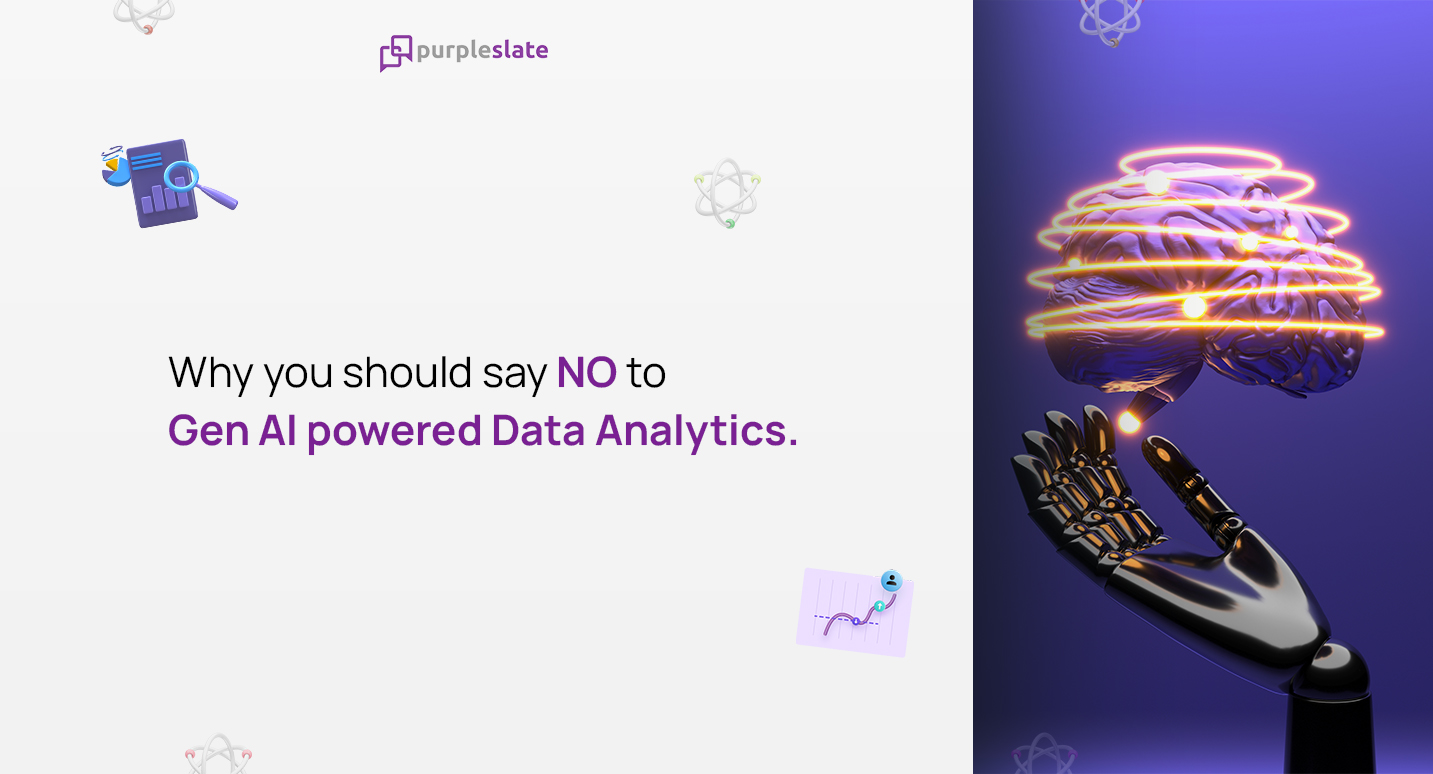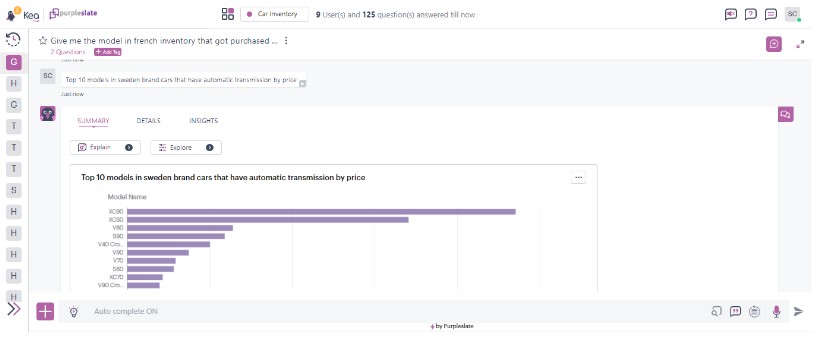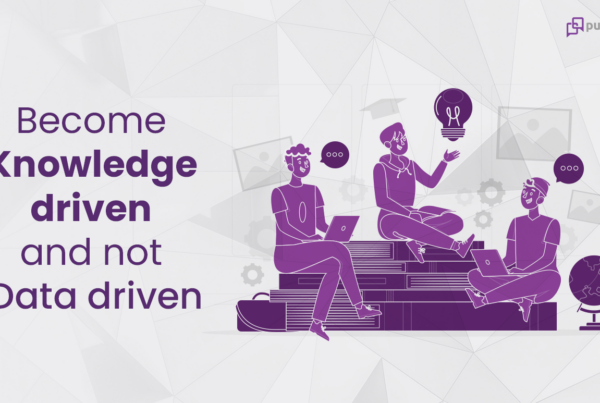
Introduction
When Open AI unveiled ChatGPT, the entire world went ga-ga over it. How can such a power exist? If someone can harness the power of Gen AI, the world must be wary of him. The first thought for many including me from the top of my mind was this one dialogue from Malcolm X.
“No man should have all that power”
Because Generative AI had a solution for every little thing. Want to know the working principle behind the B-20 bomber? Ask a Gen AI platform. Looking for literary allegories from Fyodor Dostoevsky’s works? Go to a Gen AI platform. Generative AI has essentially reimagined how people and organizations consume information. They are not just satisfied by a simple Google search. People have become used to Gen AI which presents information in a conversational format and essentially removes the inherent need for humans to even put in the effort to scroll through a search result, open multiple links, and look for the relevant information.
The next obvious evolution in the world of Generative AI is built in multimodality where the model will accept inputs and outputs not only in text but also audio, visuals, and more. The intelligence is truly astounding.
This is one end of the spectrum. The other end is even more interesting.
When the world heaped its praises on Generative AI, on the other end, AI doomsday conspiracy theorists and naysayers were having a field day. They went ahead and whipped out the age-old weapon from their arsenal. Let me tell you that weapon turned out to be quite effective too. You would’ve guessed it but let me shine my light on that obvious worn-out statement.
“Gen AI will take away your jobs”
Across the world, everyone started weighing on this trope. Narratives were built around this phrase. A new fear was unlocked. FOBO – Fear of Being Obsolete. Many said Gen AI will replace your jobs, while others thought Gen AI will augment existing operations and help humans move away from simple transactional tasks.
There is no doubt that Gen AI will be a great asset to organizations. But Generative AI also became the most abused term in business communication. Everyone has a Gen AI product. Everything is Gen AI powered. Including data analytics.
Ah! Now it’s a bit of a problem, you see. Generative AI has an inherent limitation. As the renowned physicist Michio Kaku says, Generative AI is like a glorified tape recorder. It parrots the information from its training data and works on the principle of probability.
With this extensive introduction, let’s get on to the topic – why Generative AI is NOT suitable for data analytics.
Probabilistic or Deterministic Models: Which is better for Data Analytics?
The first point of interest is understanding the differences between probabilistic and deterministic models. Why? Because Generative AI runs on the principle of probabilistic models. In the world of AI driven data analytics, the choice between probabilistic and deterministic models plays an important role in shaping the outcome of analyses, predictions, and decision-making processes. Learning the disparities between probabilistic and deterministic models, shedding light on their respective roles is pivotal to understanding the nuances of AI powered analytics.
Probabilistic Models: The Essence of Generative AI
Probabilistic models operate on the principle of uncertainty, embracing the inherent variability and randomness present in data. Unlike deterministic models, which yield precise outputs for given inputs, probabilistic models provide distributions of possible outcomes along with associated probabilities. This inherent flexibility enables probabilistic models to be an asset to Generative AI, which relies heavily on them to mimic and understand the underlying structure of data.
Deterministic Models: The Cornerstone of Data Analytics
Contrary to probabilistic models, deterministic models offer deterministic outputs for given inputs, leaving no room for uncertainty. These models adhere to strict cause-and-effect relationships, where the same input consistently produces the same output. Whether it’s regression analysis, classification algorithms, or time-series forecasting, deterministic models provide a solid foundation for understanding patterns, trends, and relationships within data.
The key differences between a probabilistic model and a deterministic model are outlined.
|
Aspect |
Probabilistic Models |
Deterministic Models |
| Nature of Outputs | Provide distributions of possible outcomes | Yield precise outputs for given inputs |
| Handling Uncertainty | Embrace inherent variability and randomness | Assume strict cause-and-effect relationships |
| Application in AI | Foundational in generative AI, capturing complex relationships | Primarily used for tasks requiring precise predictions and deterministic outcomes |
| Data Analytics Use | Less suitable for scenarios requiring precise forecasts and deterministic results | Well-suited for data analytics platforms and tools, ensuring reproducible and interpretable outcomes |
| Interpretability | Outputs are probabilistic, requiring interpretation of probabilities | Outputs are deterministic, facilitating straightforward interpretation |
| Examples | Variational autoencoders (VAEs), Generative Adversarial Networks (GANs) | Linear regression, Decision trees, Support Vector Machines (SVMs) |
Thus, from the underlying working principle of Generative AI – The probabilistic model introduces challenges in data analytics, particularly in scenarios where precise predictions or deterministic outcomes are paramount. In domains such as finance, healthcare, and engineering, where decisions hinge on accurate forecasts and risk assessments, the inherent uncertainty of probabilistic models may undermine confidence and reliability.
On the other hand, deterministic models facilitate reproducibility and interpretability in data analytics. Data analytics platforms and tools, designed to extract actionable insights and drive informed decision-making, heavily rely on deterministic models. The deterministic nature of these models aligns seamlessly with the requirements of data analytics, where stakeholders demand precise predictions, reliable forecasts, and interpretable results. From optimizing marketing campaigns to predicting customer behavior, deterministic models empower organizations to extract value from their data assets with confidence and precision.
Hallucinations – The Bane for Gen AI powered Data Analytics
We have discussed how the probabilistic model of Gen AI is not the right approach for a data analytics solution. Have you ever thought of what would transpire if a probabilistic model was indeed used in data analytics?
Hallucinations.
Generative AI models are designed to learn and mimic the underlying structure of data. Through continuous training, generative AI models are susceptible to generating hallucinated or unrealistic outputs. These hallucinations manifest as erroneous samples that deviate from the true data distribution. While they may appear convincing, closer scrutiny reveals inconsistencies, anomalies, or distortions that undermine their fidelity and reliability.
Implications for Data Analytics
The implications of data analytics when handling hallucinated insights is huge. A few impacts across different functions and industries are outlined.
- Financial Forecasting: If a generative AI model is used to forecast stock prices, then hallucinated data points leads to erroneous investment decisions and financial losses.
- Healthcare Diagnostics: Generative models for disease diagnosis may lead to hallucinated insights introducing false positives or negatives, impacting patient safety and treatment efficacy.
- Regulatory Compliance: Risk management assessments by Generative AI powered data analytics possess the risk of flawed risk evaluations due to hallucinated data. Flawed evaluations follow with legal and financial repercussions with regulators slapping heavy fines.
- Marketing Analytics: Hallucinated insights from Marketing data lead to misguided marketing strategies and ineffective campaigns. The impact is bifold – Loss of brand reputation and investment together.
- Supply Chain Management: Generative data analytics platforms can hallucinate during demand forecasting. It causes overstocking or stockouts, disrupting operations and profitability.
The implications are far and varied for different functions and only a miniscule percentage is discussed here. Now that Generative AI is not a preferable approach to data analytics is there any similar solution that will help us in gaining insights using English language?
Conversational Business Intelligence with Kea – Our Smart Virtual Data Analyst
Generative AI powered data analytics is just a buzzword for every data analytics platform. True data analytics models are absolute and what helps in such a scenario? Another compatriot for Generative AI – Conversational AI.
Conversational AI powered business intelligence tools leverage the power of both NLP and NLU to fetch the right data. It lets business users access insights with the easiest and most intuitive interface – Language.
Let me demonstrate this with a simple example. Hypothesize that you’re a sales manager responsible for the North American sales of a renowned Car dealership. You know that demand for Swedish cars is high since it is a synonym for safety. A lot of well-off families are looking to shift into an auto gear variant.
Imagine you have a generative AI powered data analytics platform, and you ask the question “Give me the top 10 Swedish brand models with an auto transmission.”
You will be bombarded with a list of models ranging from Volvo XC90 to Saab, Koenigsegg, and more. Now, you know that your organization only deals with Volvo cars. Here is where the probabilistic model goes belly up with hallucinations because in its training data somewhere it has learnt that Koenigsegg, Saab, Polestar, etc. are Swedish brands.
The way out is simple. Switch to a conversational AI driven data analytics platform like Kea. Ask the same question to Kea and the answers will be what you need as illustrated below.

Say Hello to Kea – Our Smart Virtual Data Analyst.
With Kea, you will get access to contextual insights tailored for a diverse set of users in one complete data platform. Forget writing complex queries to access insights. All one needs to know is how to frame the questions without the inherent fear of consuming stale data or hallucinated information.
Kea ensures the insights you derive are always: –
- Instantaneous – Agility is a promise with Kea
- Momentary – What you expect. Nothing more, nothing less.
- Actionable – Taking actions that are meaningful and aligns towards your objectives.




